The Weekend Australian book review: ‘The Dark Net’ by Jamie Bartlett, November 2014
A book review for The Weekend Australian in November 2014, republished below in its entirety.
Jamie Bartlett’s The Dark Net delves into internet’s murky depths
Beneath the surface of the well-trod online paths characterised by familiar corporate names — Google, eBay, YouTube, iTunes — mainstream news and entertainment portals lies a hidden layer: the “dark net’’, a shadier cousin of the comparatively generalist ‘‘cyberspace’’. It cannot be accessed by traditional web browsers, only via anonymising software called Tor, an acronym for The Onion Router, a cute nod to the network’s technical complexity.
In his introduction to The Dark Net, British author Jamie Bartlett describes this online realm as “a place without limits, a place to push boundaries, a place to express ideas without censorship, a place to sate our curiosities and desires, whatever they may be. All dangerous, magnificent and uniquely human qualities”.
Yet the dark net is best known for enabling the development and proliferation of two shady human endeavours: marketplaces for illicit drugs and child pornography hubs, areas that Bartlett interrogates in some detail. However, the title of this book is a bit misleading: rather than peeling back the onion’s layers, Bartlett broadens his scope by examining the “myriad shocking, disturbing and controversial corners of the net — the realm of imagined criminals and predators of all shapes and sizes”.
He begins by tracing the history of the internet, and how the ‘‘online disinhibition effect’’ led to incendiary behaviours such as ‘‘trolling’’ and ‘‘flaming’’. This section is enlightening and well written. Even though I’ve been a heavy internet user for nearly 15 years, I learned a lot.
“Whether we like it or not, trolling is a feature of the online world today,” Bartlett concludes. “As we all live more of our lives online, trolls might help us to recognise some of the dangers of doing so, make us a little more careful, and a little more thick-skinned. One day, we might even thank them for it.”
He takes a magnifying glass to idealistic encryption software and ‘‘cryptocurrencies’’ such as Bitcoin, as well as social networks devoted to inflammatory topics such as self-harm, anorexia and British nationalism. The tone throughout is more journalistic than judgmental: “For every destructive subculture I examined,” he writes, “there are just as many that are positive, helpful and constructive.”
The Bitcoin chapter takes him to a techno-commune in Barcelona, where programmers code through the night, fuelled by the libertarian promise of the unregulated currency. But the author isn’t convinced: “… if everyone starts using Bitcoin, government’s ability to tax and spend will diminish: healthcare, education and social security will suffer. The things that hold democracies together, and provide support for the most in need. Societies cannot be broken and fixed like computer code, nor do they follow predictable mathematical rules. If genuinely anonymous communication becomes the norm, it’s inevitable that it will be used by criminals too.” Such caution is prescient: in August, the Australian Taxation Office published a paper stating its views on Bitcoin, including its intention to treat it not as a currency but as an asset, akin to property or shares — a move that has been criticised by Bitcoin proponents as shortsighted and ill-informed.
The line about criminals quoted above is explored in depth, too, when Bartlett inadvertently stumbles across a child pornography website while browsing the dark net’s Hidden Wiki. “Once I’d opened my Tor browser, it took me two mouse clicks to arrive at the page advertising the link,” he writes. “If I had clicked again, I would have committed an extremely serious crime. I can’t think of another instance where doing something so bad is so easy.”
This narrative thread takes him to the Internet Watch Foundation, an organisation devoted to removing online child pornography. At its offices in Cambridgeshire, no family photos are allowed on desks, part of an effort to keep private and professional lives separate.
Bartlett, who is director of the Centre for the Analysis of Social Media at London think tank Demos, also interfaces with illicit drug marketplaces such as Silk Road, receiving a small amount of cannabis through the postal system after paying for it with Bitcoin. Here his tone is one of academic distance: “Inside, the product was carefully sealed, the correct weight and, according to an expert friend of mine, appeared to be extremely good quality.”
In the book’s most entertaining vignette, Bartlett sits in on a ‘‘camgirl’’ broadcast wherein three young women pleasure themselves and each other in exchange for cash tips from their thousands of global viewers. “The three of them are sitting on the bed in sexy clothes, arms around each other like a school gang,” he writes breathlessly. “I am sitting just off-camera, two feet away from the bed, a pad of paper and my laptop on my knees […] It all feels a little strange, to say the least.”
Bartlett covers a lot of ground in The Dark Net without becoming bogged down in technical minutiae. Even experienced dark net users will find this book engrossing. He also refuses to buy into the hysteria about this online realm: “In the dark net, we can simply find more, do more and see more. And in the dark net we have to be careful, cautious and responsible.”
Andrew McMillen is a Brisbane-based freelance journalist and author of Talking Smack: Honest Conversations About Drugs.
The Dark Net: Inside the Digital Underworld
By Jamie Bartlett
Random House, 320pp, $35



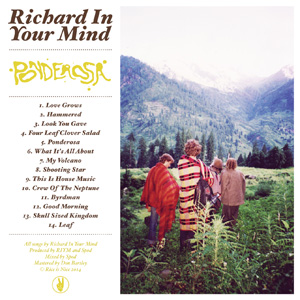
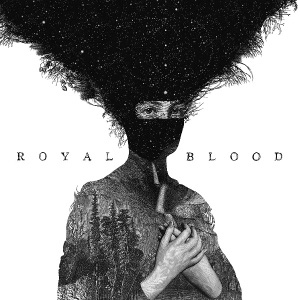



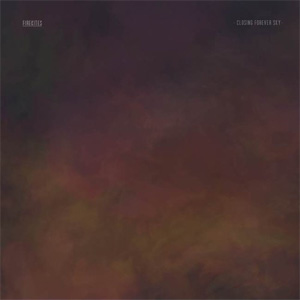
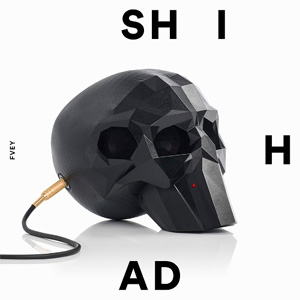
 Piano-led pop is the domain of this Sydney-based singer-songwriter, who demonstrates a firm grasp of the genre on his second album. Backed by a compact rhythm section and occasional flourishes from stringed instruments, Scott Spark has arranged a winning follow-up to his 2010 debut, Fail Like You Mean It.
Piano-led pop is the domain of this Sydney-based singer-songwriter, who demonstrates a firm grasp of the genre on his second album. Backed by a compact rhythm section and occasional flourishes from stringed instruments, Scott Spark has arranged a winning follow-up to his 2010 debut, Fail Like You Mean It. Few careers in Australian pop music have burned as steadily and slowly as that of Adelaide-born Sia Furler. Her second album, 2001’s Healing is Difficult, yielded a couple of singles that hit on the British charts but barely raised heart rates here; a key placement in the finale of HBO drama Six Feet Under in 2005 added fuel to the fire, as did her ARIA Award-winning fifth LP, 2010’s We are Born. Yet it is only in the past couple of years that the spark has finally burst into full conflagration. Happily for the camera-shy 38-year-old, her greatest success has come through writing hit songs for the likes of pop luminaries Rihanna, Katy Perry, Britney Spears and Beyonce. For Furler, the result has been fortune without much of the fame.
Few careers in Australian pop music have burned as steadily and slowly as that of Adelaide-born Sia Furler. Her second album, 2001’s Healing is Difficult, yielded a couple of singles that hit on the British charts but barely raised heart rates here; a key placement in the finale of HBO drama Six Feet Under in 2005 added fuel to the fire, as did her ARIA Award-winning fifth LP, 2010’s We are Born. Yet it is only in the past couple of years that the spark has finally burst into full conflagration. Happily for the camera-shy 38-year-old, her greatest success has come through writing hit songs for the likes of pop luminaries Rihanna, Katy Perry, Britney Spears and Beyonce. For Furler, the result has been fortune without much of the fame. The first time we heard Sydney songwriter Jonathan Boulet was five years ago, on a self-titled album that bubbled with nervous energy, clattering acoustic guitars and folk-rock sensibilities. It was a similar story with a stronger second album in 2012, yet Gubba heralds a considerable stylistic shift.
The first time we heard Sydney songwriter Jonathan Boulet was five years ago, on a self-titled album that bubbled with nervous energy, clattering acoustic guitars and folk-rock sensibilities. It was a similar story with a stronger second album in 2012, yet Gubba heralds a considerable stylistic shift. Four albums and eight years into its career, this Baltimore pop trio has hit its stride with Singles, a 10-song collection that all but lives up to its title. The band’s previous release, 2011’s On the Water, was memorable but lacked the consistent hooks that set Singles apart. The songs are assembled with the usual suspects on keyboards, bass, guitar and drums, but vocalist Sam Herring dominates.
Four albums and eight years into its career, this Baltimore pop trio has hit its stride with Singles, a 10-song collection that all but lives up to its title. The band’s previous release, 2011’s On the Water, was memorable but lacked the consistent hooks that set Singles apart. The songs are assembled with the usual suspects on keyboards, bass, guitar and drums, but vocalist Sam Herring dominates. For all the great strides that the genre has made since attaining critical mass more than a decade ago, Australian hip-hop can tend to mine the same soil over and over. Familiar thematic tropes have become entrenched in the minds of artists and audiences; to pursue sounds from outside of that comfort zone is to risk alienating listeners.
For all the great strides that the genre has made since attaining critical mass more than a decade ago, Australian hip-hop can tend to mine the same soil over and over. Familiar thematic tropes have become entrenched in the minds of artists and audiences; to pursue sounds from outside of that comfort zone is to risk alienating listeners.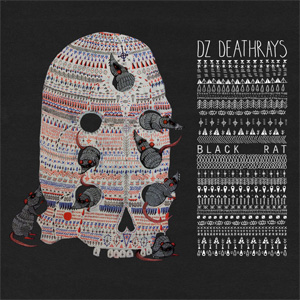 Two years between releases finds this Brisbane duo evolving beyond its self-dubbed “thrash party” roots in favour of songwriting maturity. It’s taking a risk of alienating their established fan base but, to DZ Deathrays’ credit, it works. This new sound suits the pair better than the comparatively juvenile approach heard on the ARIA award-winning 2012 debut Bloodstreams and its preceding EPs.
Two years between releases finds this Brisbane duo evolving beyond its self-dubbed “thrash party” roots in favour of songwriting maturity. It’s taking a risk of alienating their established fan base but, to DZ Deathrays’ credit, it works. This new sound suits the pair better than the comparatively juvenile approach heard on the ARIA award-winning 2012 debut Bloodstreams and its preceding EPs.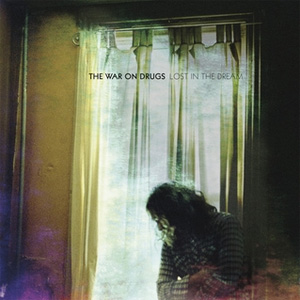
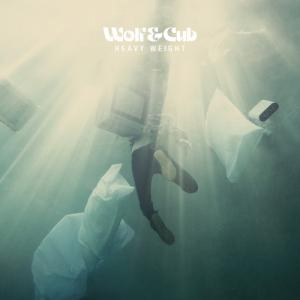 While Perth act Tame Impala has been flying the flag for Australian psychedelic rock since 2010, playing on American talk shows and at nearly every festival in the world, Adelaide quartet Wolf & Cub have been quiet.
While Perth act Tame Impala has been flying the flag for Australian psychedelic rock since 2010, playing on American talk shows and at nearly every festival in the world, Adelaide quartet Wolf & Cub have been quiet.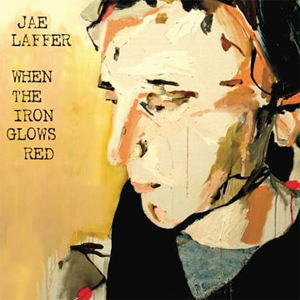 As frontman of Perth-born pop act The Panics, Jae Laffer is well regarded for his songwriting quantity and quality.
As frontman of Perth-born pop act The Panics, Jae Laffer is well regarded for his songwriting quantity and quality. New work by one of Australia’s most distinctive guitarists is always worth a listen, and usually worth dwelling on at some length.
New work by one of Australia’s most distinctive guitarists is always worth a listen, and usually worth dwelling on at some length. ‘Yorta Yorta’, the opening track of this Sydney band’s debut album, is one of the most striking songs released this year.
‘Yorta Yorta’, the opening track of this Sydney band’s debut album, is one of the most striking songs released this year. Tales of the City
Tales of the City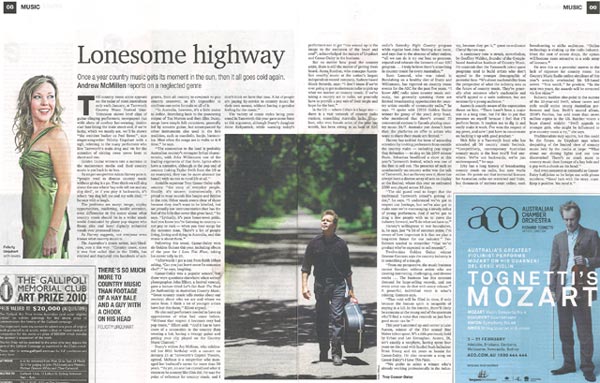
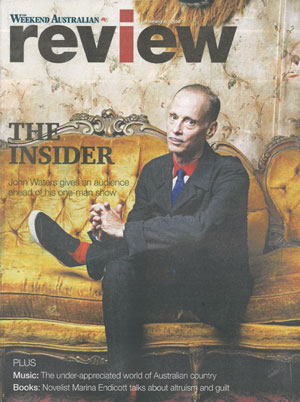 It was the most exhilarating journalistic experience of my life. Five days focussed on researching and synthesising the story of a centuries-old art form into around 2,000 words. What a challenge. I’m so glad I accepted it. It even resulted in my first
It was the most exhilarating journalistic experience of my life. Five days focussed on researching and synthesising the story of a centuries-old art form into around 2,000 words. What a challenge. I’m so glad I accepted it. It even resulted in my first